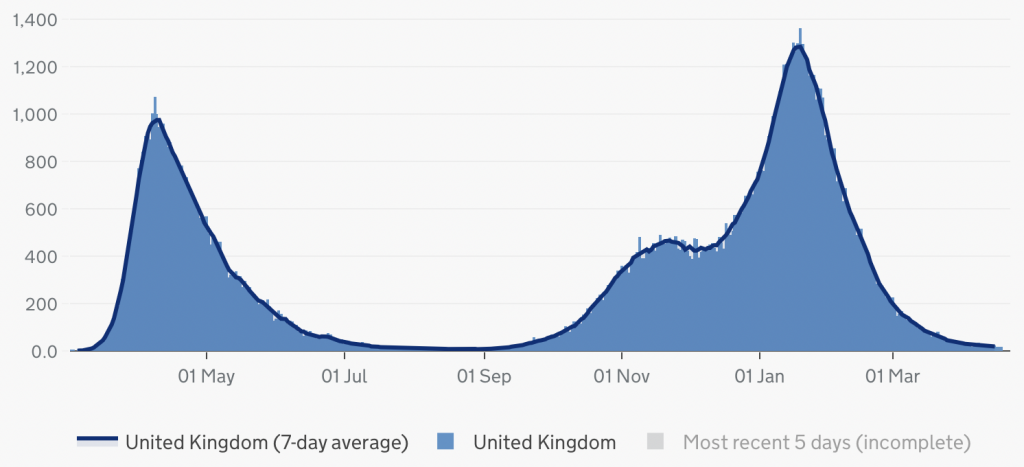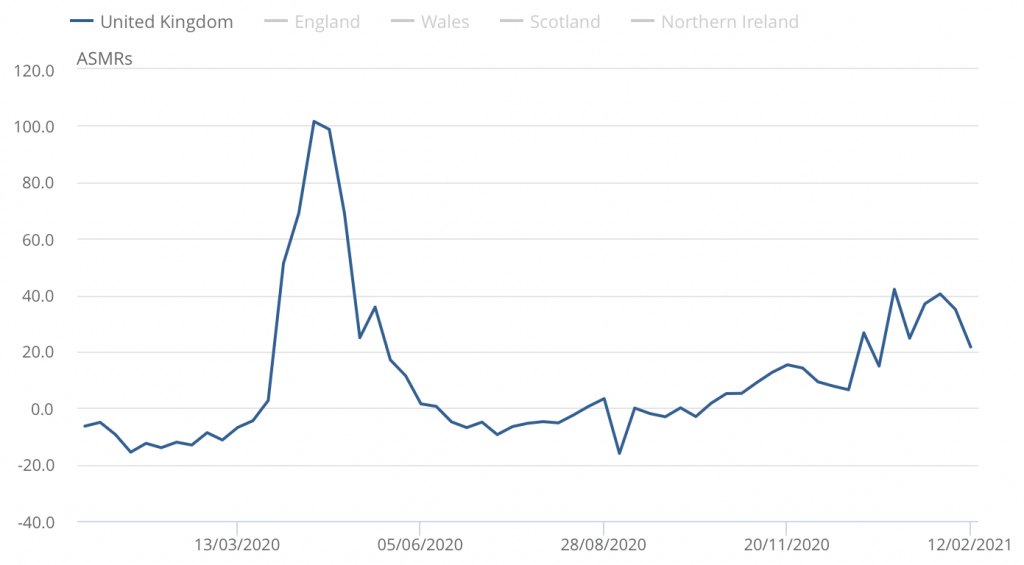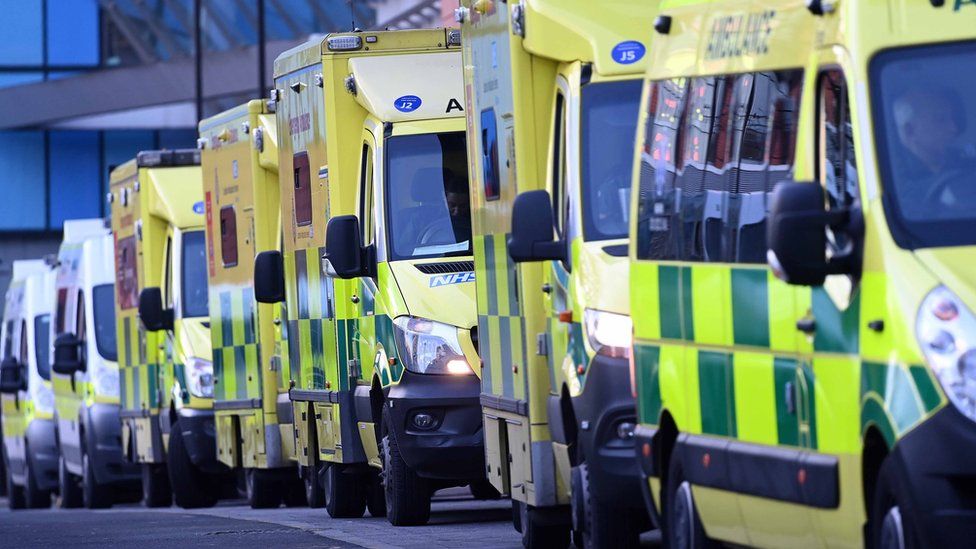The BBC and other media outlets continue to post the chart showing the number of deaths within 28 days of a positive test. And this is the first chart you see after clicking ‘Deaths’ on the government’s COVID-19 dashboard. Here it is below:

However, the chart gives a very misleading impression of the relative severity of the first and second waves. It has been claimed, for example, that the second wave was “more deadly” than the first. And in fact, if you sum the figures under each of the two curves in the chart above, you find that the total for the second wave is more than double the total for the first wave.
But simply counting the number of deaths within 28 days of a positive test isn’t the best way to gauge COVID-19’s impact on mortality. This method understates the number of deaths in the first wave because some people died of COVID-19 without being tested. And it overstates the number of deaths in the second wave because some people who would have died anyway happened to test positive.
As Sarah Caul (the Head of Mortality Analysis at the ONS) has noted, “For the best comparisons, we really need to look at age-standardised mortality rates.” These take into account the ages of those who died, as well as the age-structure of the overall population.
The ONS recently calculated weekly age-standardised mortality rates going back to 2015. They then calculated excess mortality for 2020 and 2021 by taking the age-standardised mortality rate in each week, subtracting the average over the last five years, and then expressing the difference as a percentage of that average. Here’s the chart they produced:

Although the figures only go up to February 12th, they indicate that the second wave was actually less deadly than the first. It’s time to retire the ‘deaths within 28 days of a positive test’ chart. At the very least, it should only be posted alongside the chart showing age-standardised excess mortality – which gives a much more accurate picture of the UK’s pandemic.












To join in with the discussion please make a donation to The Daily Sceptic.
Profanity and abuse will be removed and may lead to a permanent ban.